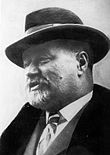Kingdom of Serbs, Croats, and Slovenes election, 1923
|
|
|||||||||||||||||||||||||||||||||||||||||||||
|---|---|---|---|---|---|---|---|---|---|---|---|---|---|---|---|---|---|---|---|---|---|---|---|---|---|---|---|---|---|---|---|---|---|---|---|---|---|---|---|---|---|---|---|---|---|
|
|||||||||||||||||||||||||||||||||||||||||||||
|
All 312 seats to the National Assembly 157 seats were needed for a majority |
|||||||||||||||||||||||||||||||||||||||||||||
| Turnout | 73.3% | ||||||||||||||||||||||||||||||||||||||||||||
|
|||||||||||||||||||||||||||||||||||||||||||||
|
|||||||||||||||||||||||||||||||||||||||||||||
Constitutional Assembly elections were held in the Kingdom of Serbs, Croats and Slovenes on 18 March 1923. The seats were divided up by the political borders which existed before the Kingdom's formation and distributed using the population statistics of 1910.
According to a TIME Magazine article published in the next week of the election, the poll was marred by voter intimidation by the military police, suppression of the opposition and the disenfranchisement of ethnic minorities like the Hungarians and the Turks.
After the elections, an opposition Federalist Bloc was formed from the Croatian Republican Peasant Party, Slovenian People's Party and Yugoslav Muslim Organization.
...
Wikipedia



